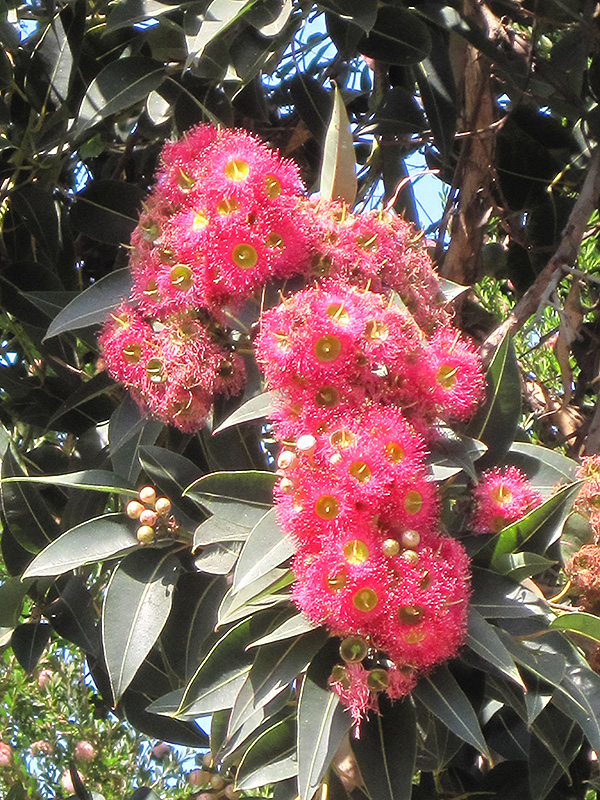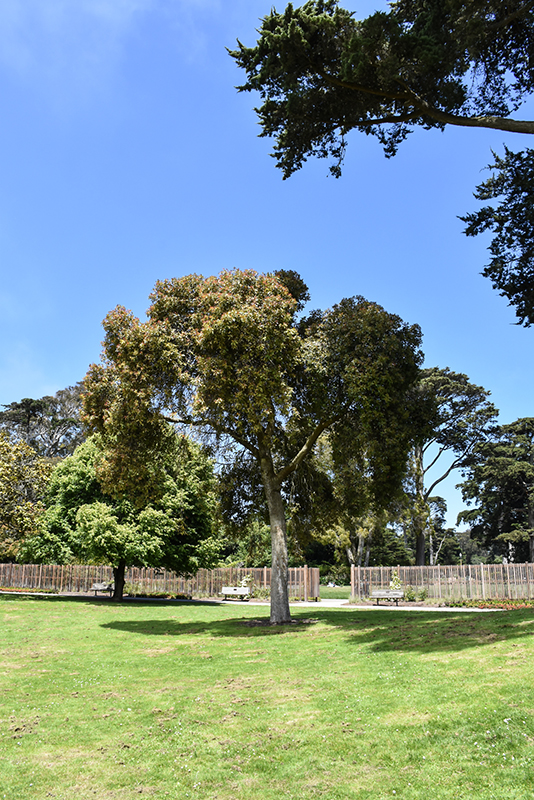Height: 50 feet
Spread: 40 feet
Sunlight:
![]()
Hardiness Zone: 9a
Other Names: Eucalyptus ficifolia
Description:
A popular, long lived tree with attractive dark green foliage and outstanding red flower clusters appearing year-round; has a spreading, upright habit with somewhat pendulous branches; a great specimen tree in coastal gardens
Ornamental Features
Red-flowering Gum features showy corymbs of scarlet pincushion flowers with rose overtones at the ends of the branches from late summer to early summer. The flowers are excellent for cutting. It has attractive bluish-green foliage with pointy creamy white spines and tinges of grayish green. The fragrant narrow leaves are highly ornamental and remain bluish-green throughout the winter. It features abundant showy tan capsules from late fall to late winter. The fruit can be messy if allowed to drop on the lawn or walkways, and may require occasional clean-up. The furrowed dark brown bark is extremely showy and adds significant winter interest.
Landscape Attributes
Red-flowering Gum is an evergreen tree with an upright spreading habit of growth. It lends an extremely fine and delicate texture to the landscape composition which can make it a great accent feature on this basis alone.
This tree will require occasional maintenance and upkeep, and can be pruned at anytime. It is a good choice for attracting birds and bees to your yard. It has no significant negative characteristics.
Red-flowering Gum is recommended for the following landscape applications;
- Accent
- Shade
- Vertical Accent
Planting & Growing
Red-flowering Gum will grow to be about 50 feet tall at maturity, with a spread of 40 feet. It has a high canopy of foliage that sits well above the ground, and should not be planted underneath power lines. As it matures, the lower branches of this tree can be strategically removed to create a high enough canopy to support unobstructed human traffic underneath. It grows at a slow rate, and under ideal conditions can be expected to live for 60 years or more.
This tree should only be grown in full sunlight. It prefers dry to average moisture levels with very well-drained soil, and will often die in standing water. It may require supplemental watering during periods of drought or extended heat. It is particular about its soil conditions, with a strong preference for sandy, acidic soils, and is able to handle environmental salt. It is somewhat tolerant of urban pollution. This species is not originally from North America.



